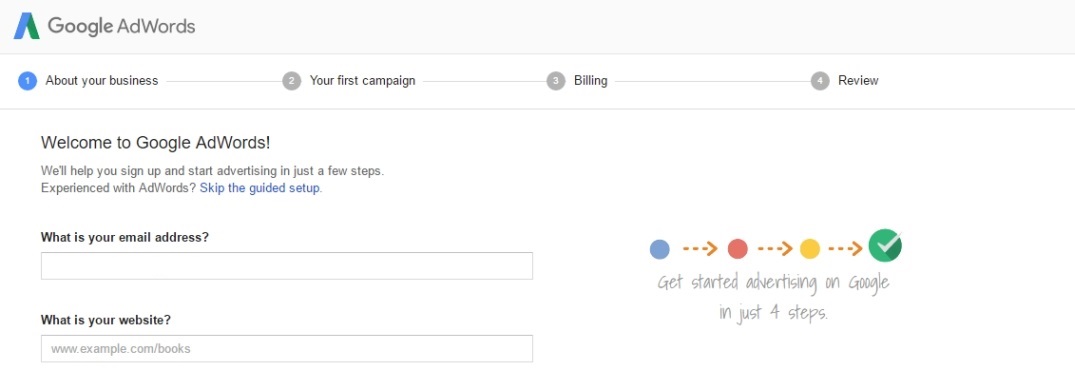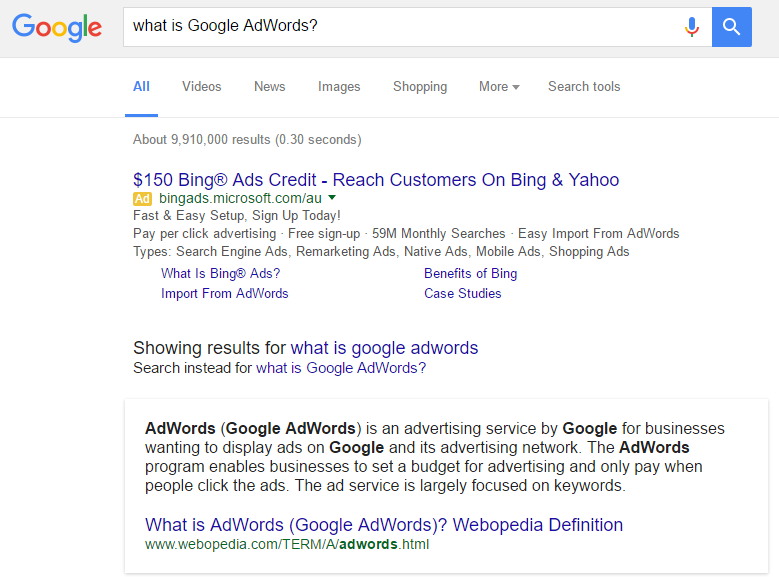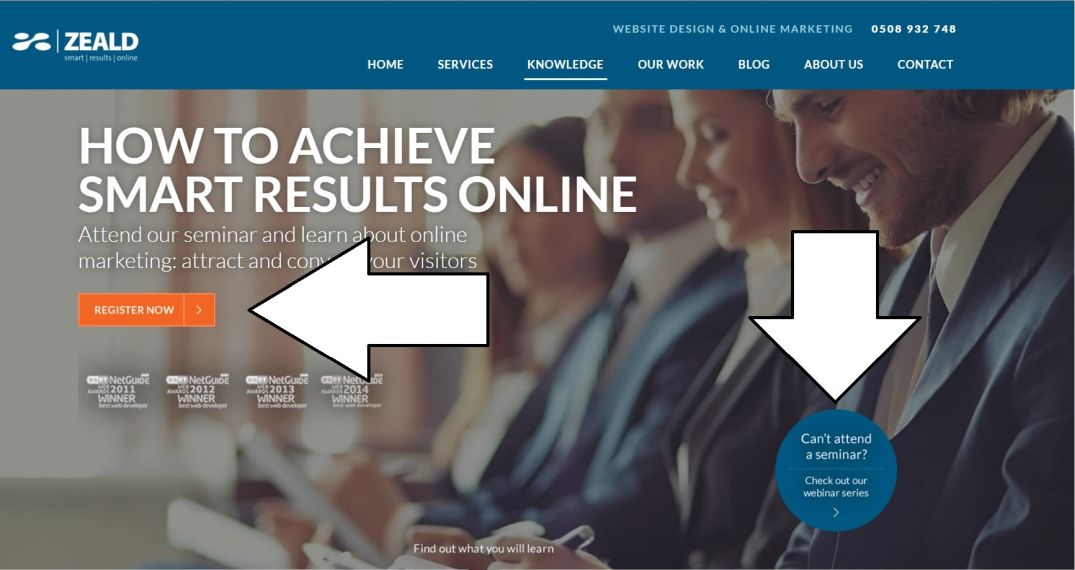What is Google AdWords and why is it important?

If you have researched online marketing in any capacity, you would have heard of Google AdWords. Even if you haven’t done the research, you’ve probably seen the ads promising your business a prominent place on the front page of a Google search. While many of these promises cannot be guaranteed, this shouldn’t put you off using the platform for your business. In fact, this post is about convincing those of you who haven’t started with AdWords to do so, and making sure your business doesn’t get left behind.
"80% of consumers state that the internet is the first place they look for information."
- Consumer Barometer, 2015
Google AdWords is a godsend for small businesses. It can put your company on the world stage for relatively little investment, compared to many other marketing types. On the flip side, it can be a money sink if not used correctly. So, what is it exactly? Well why don’t we ask Google itself?

“AdWords is an advertising service by Google for businesses wanting to display ads on Google and its advertising network.”
You may notice that the definition we were after is not the first thing we are presented with in the results here. Directly underneath the search bar, is an advertisement. This is a paid ad (shown by the small yellow box stating ‘ad’), ironically promoting another advertising service from search engine competitor ‘Bing’. How did Microsoft convince Google to promote their own Bing ads? Well, they paid for it using AdWords.
After creating an account, users can set their location target allowing them to specify which geographical location will be served their ads. You can then specify a daily budget, and how much you are willing to spend on each ad. Setting a budget of $20 per day however, doesn’t mean it will cost you $20 every day. Google AdWords uses a ‘pay per click’ (PPC) method of advertising, which means you are only charged when a user clicks on your ad. The amount you pay when a user clicks is completely up to you, however the higher your proposed cost per click, the more likely your ad will be served.
AdWords works using a keyword bidding system. First, you’ll need to think about what users are typing into Google in an attempt to find your business offering. If you sell footwear for example, your selection of keywords may include: shoes, boots, sandals, jandals etc. Now depending on the popularity of these keywords, the more expensive it will become to use them in your advertisement. ‘Shoes’ in particular will likely have a number of competing businesses all wanting their ad to show up when a user types ‘buy cheap shoes in Auckland’ into Google. The result is that you may have to tell Google that you’ll pay 50c for every person who clicks on your ad, to out-bid the others who are only willing to pay 25c. This still doesn’t guarantee your ad will show up when somebody searches for ‘shoes’, but it gives you a higher chance, and potentially a higher placement on the page.
There isn’t any sure fire way to ensure that every ad campaign you run on AdWords will get the best placement in Google searches for the best price, but there are various things you can do to come as close as possible. Ad serving and placement is not solely determined by your keyword bid, but by AdWords quality score. This is determined by relevance, landing page (where your ad links to) and expected clickthrough rate. Each of these factors can be dissected even further but to put it simply, Google can determine if your customers are going to be interested in clicking the link, before it’s even shown to them. Obviously it’s in their best interests to display the most effective advertising, and so they do.
You can find out how to set up a Google Adwords campaign in this blog post.
Now that you have a basic understanding of Google AdWords and how it works, it should start to become clear how important this tool can be for small businesses. You can pay what you want, tap into a very large user base, and only reach those who will be most interested in what you have to offer. It gets even better though. Not only does AdWords allow advertising through Google Search, but through all of Google's networks. This means you can show your ads through YouTube, Google+, TV, mobile and the Google Display Network. The latter being a collection of over two million websites that give Google space on their sites to show advertisements.
Google AdWords is absolutely a valuable investment for small business. Whether you just run a couple of ads every now and then, or analyse all the results and tailor the perfect digital marketing campaign, AdWords is a great way to get results online.



